Brent Cizek, the shooter, said, “It blew my mind.”
They follow her everywhere she goes. Each and every one of the 76.
A wildlife photographer recently took a stunning picture of a female duck in Minnesota taking care of about sixty ducklings. The picture was taken at Lake Bemidji, which is about 150 miles northwest of Duluth, Minnesota.
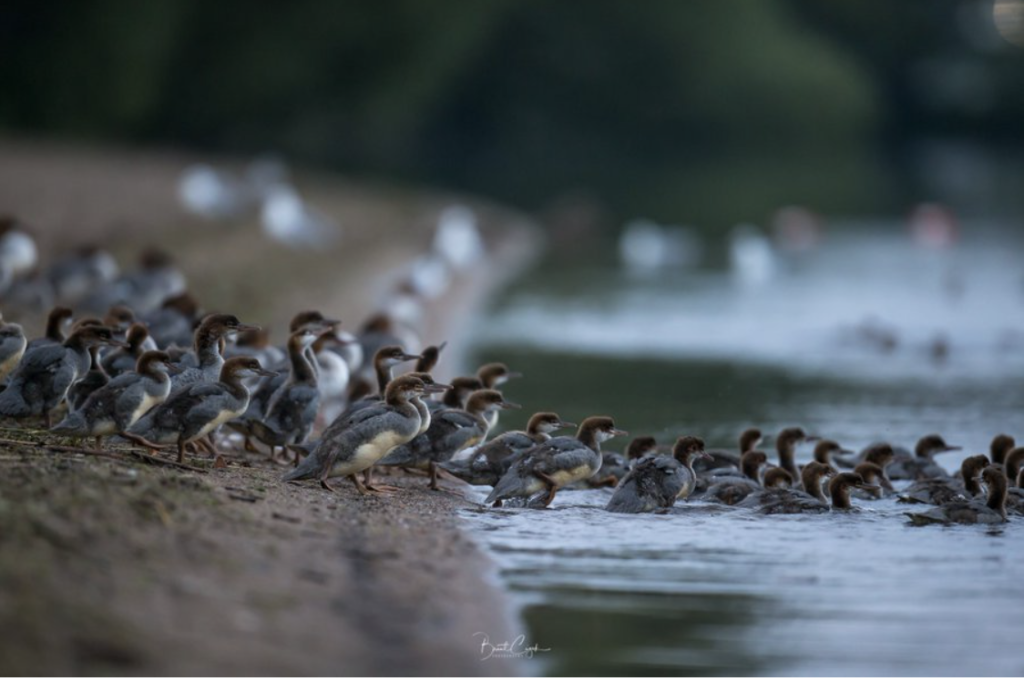
Brent Cizek, the shooter, said, “It blew my mind.” “I had no idea a duck could take care of that many chicks.”
Seeing a lot of ducklings together is pretty common. Twenty or thirty have been seen with a single hen. But over 70?
It was a very rare sighting, according to Richard O. Prum, an ecologist at Yale University.
Experts say the picture, which has been shared among bird lovers and is on the website of the National Audubon Society, shows an extreme case of something that happens in nature all the time. Here is the story and the science behind the picture that caught your eye.
What is that picture about?
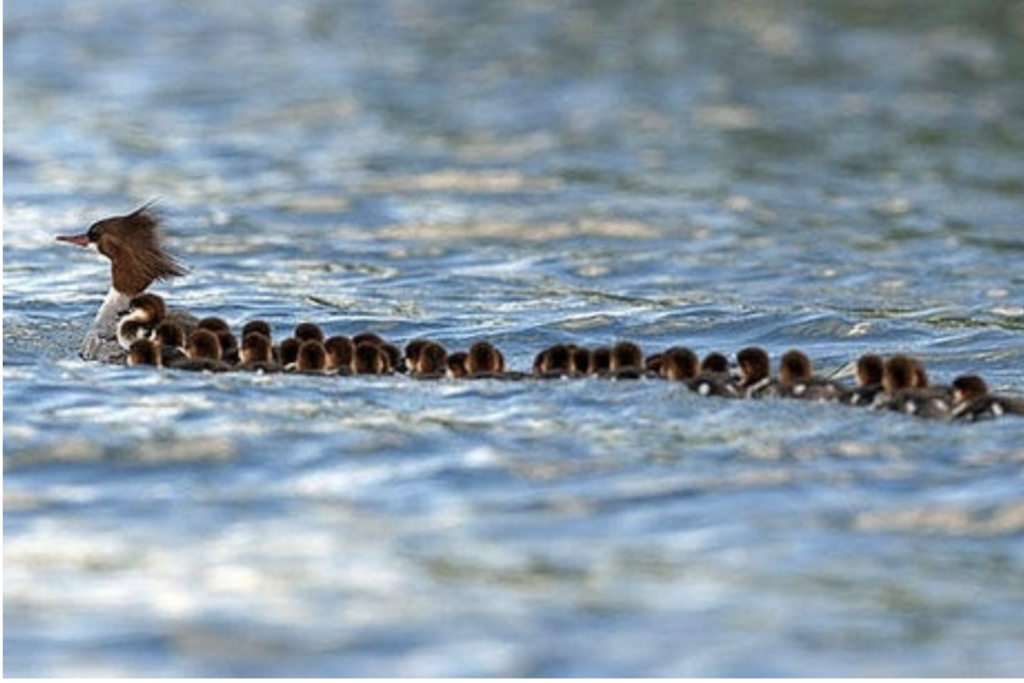
Cizek said he first saw the nest in late June, when he took an 8-foot plastic boat to a nearby lake to look for wildlife for his photos. He brought one camera and one lens with him because he didn’t think he would be taking many shots that day. But when he saw the duck and her babies, he changed his mind.
Even though the water was rough, he started taking pictures. He said that when he got home and looked at his camera roll, there was only one picture that came out: the duck, who is being called Mama, leading the long line of ducklings behind her.
“Something about it makes you look and wonder, ‘How?'” Cizek said. “How did this happen?” How does this mom take care of all these ducklings? In the picture, she only looks very happy and calm.
At that time, he thought there were more than fifty ducklings in the group. That same month, he went to the lake again and saw as many as 76.
Could she be the mother of all those babies?
Not at all. Mama is a common merganser, a type of duck that lives in fresh water lakes. What the National Audubon Society says is that females can lay up to twelve eggs.
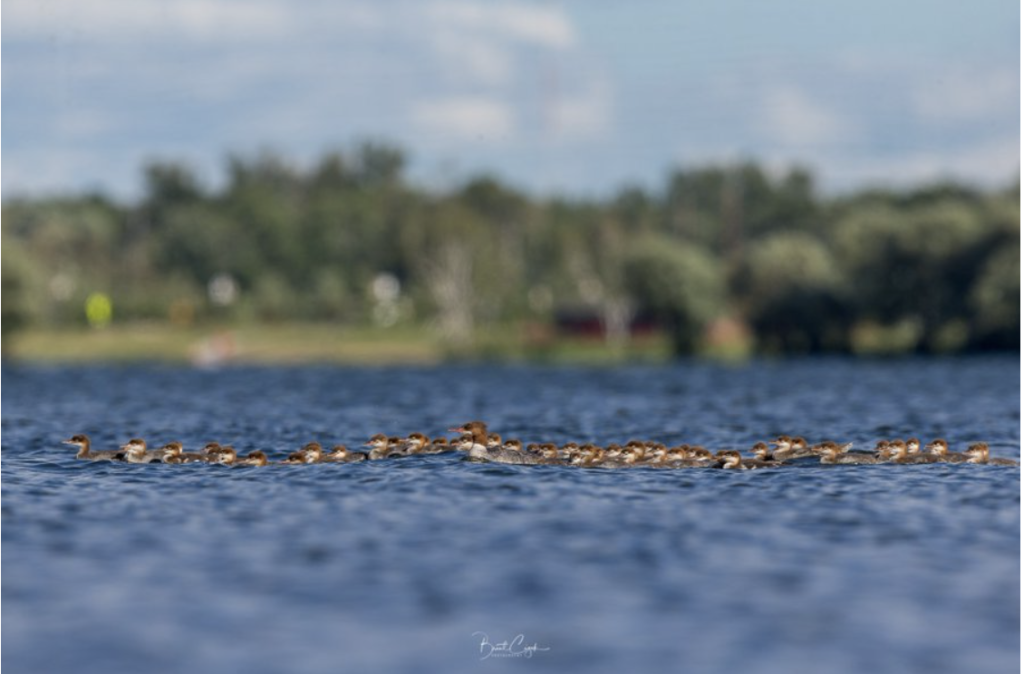
But here’s the catch: common mergansers don’t just care for their own eggs. Experts say that female birds often “dump” their eggs in the nests of other birds to give their young a better chance of survival by spreading them out.
Anyway, Prum said Mama could not have sat on so many eggs, even if other birds’ eggs were dumped in her nest.
“This person could not have done something like incubate 50 eggs,” he said. “That’s way too much.”
Why does she have so many ducklings to take care of?
Reports say that some birds, like common mergansers and ostriches, raise their young in a place called a crèche.
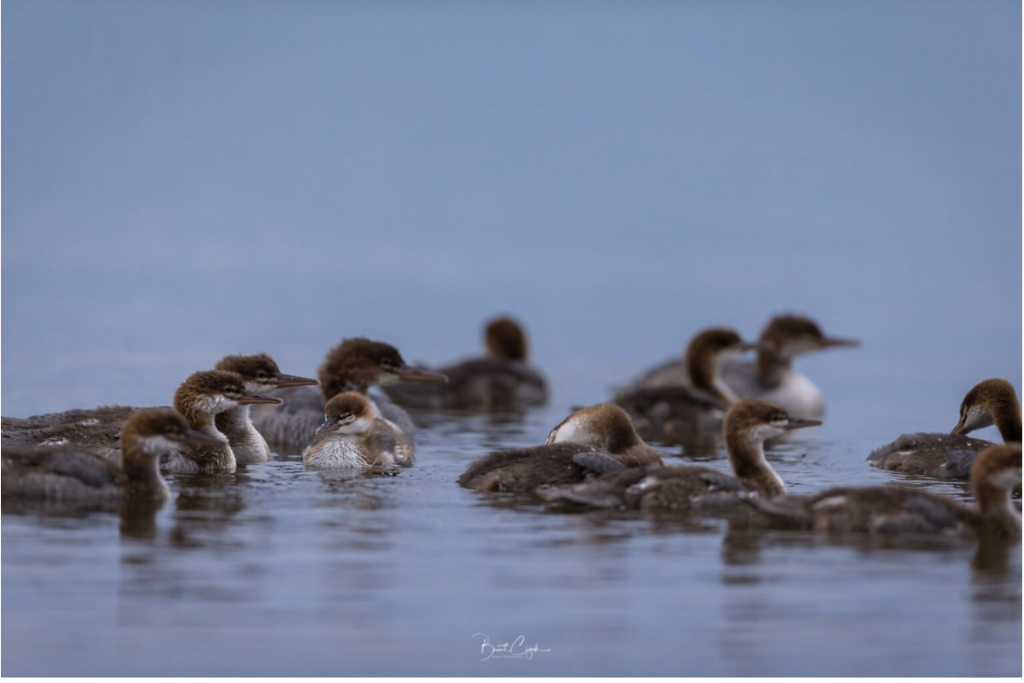
David Rave, an area wildlife manager for the Minnesota Department of Natural Resources in the Bemidji region, said that in a crèche, female ducks leave their ducklings with another female, usually an older female who knows how to take care of babies.
He said that the females at Lake Bemidji lay eggs that hatch around the same time. Many of them are connected with each other. He said that after that, the adult ducks leave their young with a matriarchal female to shed their feathers.
Rave said, “She’d be like the great-grandmother.”
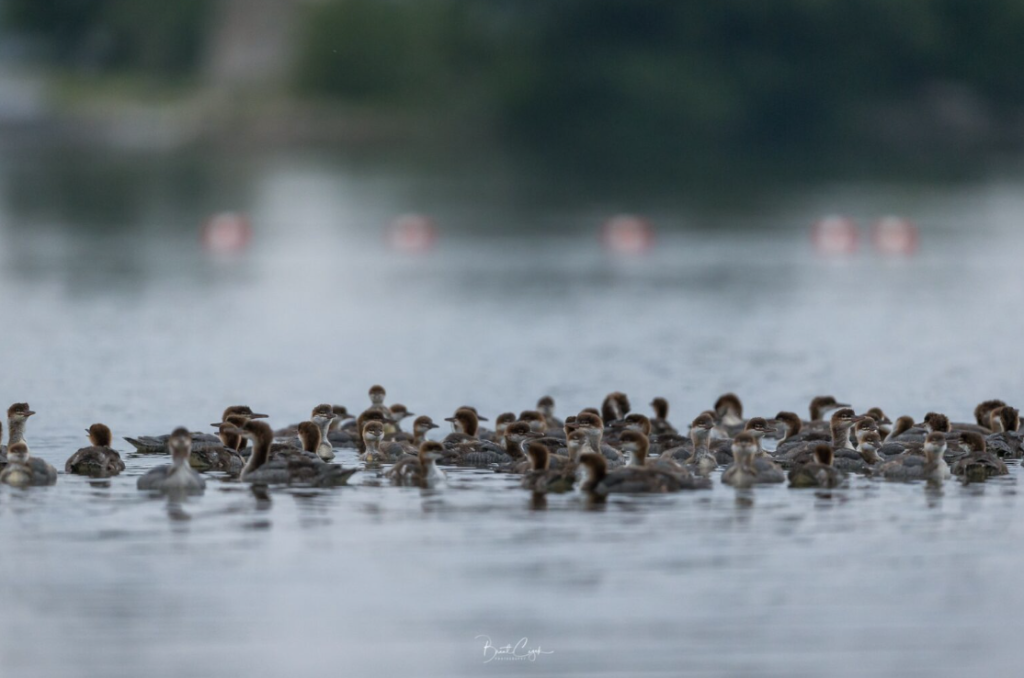
Rave said that this is a normal behavior for this species, but the crèche in the picture is very big. He said, “That’s a lot.” “That would be a very big crèche. I’ve seen them up to 35 and 50 times.”
The photographer, Cizek, has been back to the lake more than once to take pictures of the ducklings as they grow. He said he saw other adult ducks around the family, but the ducklings always follow Mama when she swims away.
“Everyone is just amazed,” Cizek said. “Everyone keeps calling me Mom of the Year.”
